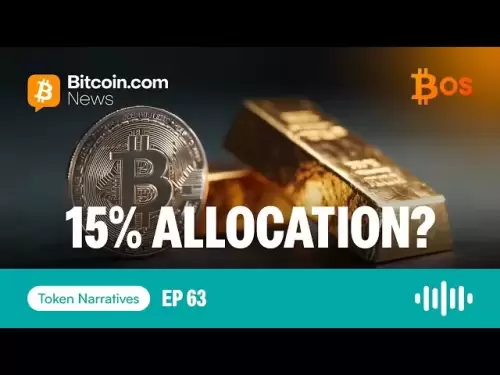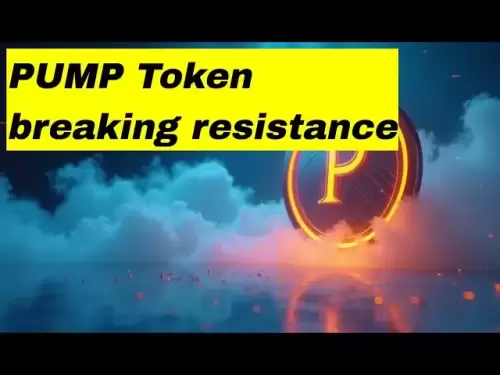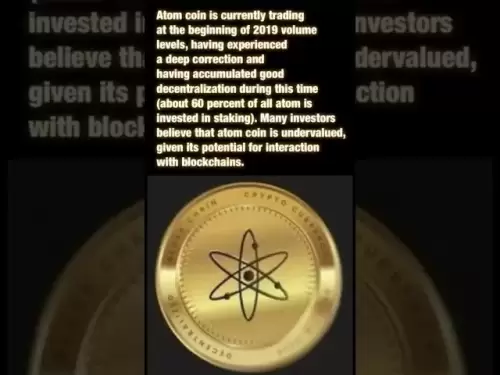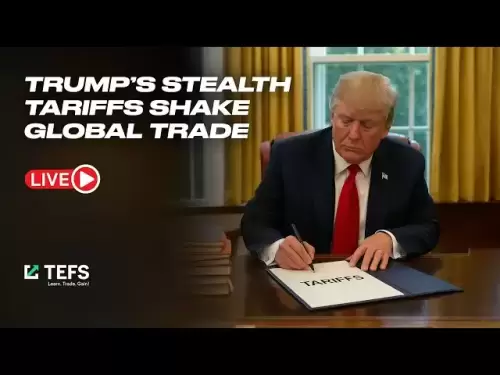-
 Bitcoin
Bitcoin $115200
-2.68% -
 Ethereum
Ethereum $3601
-5.16% -
 XRP
XRP $3.035
-2.96% -
 Tether USDt
Tether USDt $0.9997
-0.04% -
 BNB
BNB $764.5
-5.43% -
 Solana
Solana $168.1
-5.92% -
 USDC
USDC $0.9998
-0.02% -
 Dogecoin
Dogecoin $0.2090
-4.80% -
 TRON
TRON $0.3272
-0.49% -
 Cardano
Cardano $0.7306
-5.00% -
 Hyperliquid
Hyperliquid $39.16
-12.22% -
 Stellar
Stellar $0.3967
-4.96% -
 Sui
Sui $3.566
-5.95% -
 Chainlink
Chainlink $16.55
-6.57% -
 Bitcoin Cash
Bitcoin Cash $552.3
-3.90% -
 Hedera
Hedera $0.2516
-4.69% -
 Avalanche
Avalanche $21.99
-5.75% -
 Toncoin
Toncoin $3.621
-0.28% -
 Ethena USDe
Ethena USDe $1.000
-0.03% -
 UNUS SED LEO
UNUS SED LEO $8.951
0.02% -
 Litecoin
Litecoin $105.9
-3.59% -
 Shiba Inu
Shiba Inu $0.00001232
-5.00% -
 Polkadot
Polkadot $3.640
-5.55% -
 Uniswap
Uniswap $9.048
-7.03% -
 Monero
Monero $301.8
-1.51% -
 Dai
Dai $0.9999
-0.01% -
 Bitget Token
Bitget Token $4.334
-3.66% -
 Pepe
Pepe $0.00001064
-6.17% -
 Cronos
Cronos $0.1367
-5.78% -
 Aave
Aave $259.2
-4.59%
Gate.io contract trading introduction: practical guide to leverage and risk control
Gate.io offers contract trading with leverage up to 100x, allowing traders to speculate on crypto price movements without owning the underlying asset.
Jun 11, 2025 at 02:08 am
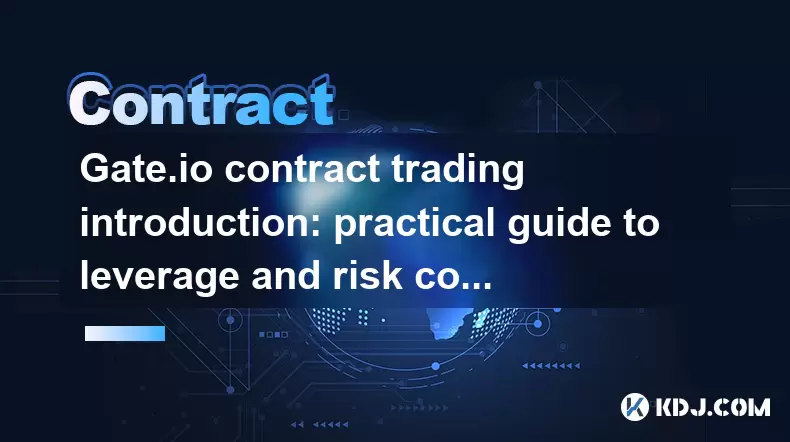
Understanding Gate.io Contract Trading
Gate.io is one of the leading cryptocurrency exchanges offering a wide range of trading options, including contract trading, also known as futures trading. This feature allows traders to speculate on the price movement of cryptocurrencies without owning the underlying asset. It's especially popular among experienced traders due to its leverage capabilities and risk management tools.
For beginners, it’s essential to understand that contract trading involves high risk because of leverage. However, with proper strategies and understanding, traders can maximize profits while minimizing losses.
Contract trading on Gate.io supports multiple cryptocurrencies like BTC, ETH, and more.
How to Access Gate.io Contract Trading
To begin contract trading on Gate.io, users must first complete their KYC (Know Your Customer) verification. Once verified, follow these steps:
- Navigate to the official Gate.io website and log in to your account.
- Click on the "Derivatives" tab located at the top navigation bar.
- Select either "USDT-Margined Futures" or "Coin-Margined Futures" based on your preference.
- You’ll be directed to the contract trading interface where you can view real-time data, charts, and open positions.
It’s important to ensure your account has sufficient funds before initiating any trades.
Leverage Options and Position Sizing
One of the core features of Gate.io contract trading is the ability to use leverage, which allows traders to control larger positions with a smaller amount of capital. Leverage ratios on Gate.io typically range from 1x to 100x, depending on the market conditions and asset type.
Here’s how to adjust leverage:
- In the contract trading section, locate the "Leverage" setting usually found near your balance display.
- Choose between cross margin and isolated margin modes. Cross margin uses your entire wallet balance as collateral, while isolated margin limits risk to a specific position.
- Adjust the leverage value according to your strategy and risk tolerance.
Proper position sizing is crucial. Traders should calculate how much they’re willing to risk per trade, factoring in stop-loss levels and account size.
Risk Control Mechanisms on Gate.io
Risk management is vital when engaging in leveraged trading. Gate.io provides several tools to help users manage risks effectively:
- Stop-Loss Orders: These automatically close a position when the price reaches a predetermined level, limiting potential losses.
- Take-Profit Orders: Similar to stop-loss but used to lock in profits once a target price is reached.
- Liquidation Price Indicator: Displays the estimated price at which your position will be liquidated if the market moves against you.
- Margin Call Alerts: Notifies users when their margin level approaches dangerous thresholds.
Users are encouraged to set these parameters before entering any trade to avoid unexpected losses.
Types of Contracts Available on Gate.io
Gate.io offers various types of futures contracts catering to different trading strategies and preferences:
- Perpetual Contracts: These have no expiration date and are settled in USDT or crypto assets. They closely mirror spot prices due to funding rate mechanisms.
- Quarterly Futures: These contracts expire on a quarterly basis and are ideal for long-term strategic positions.
- Inverse Futures: Denominated in cryptocurrency rather than fiat or stablecoins, often used by institutional traders.
Each contract type behaves differently under market fluctuations, so traders should understand the nuances before committing funds.
Frequently Asked Questions (FAQs)
Q: Can I trade Gate.io contracts without KYC?
A: No, completing KYC is mandatory to access contract trading services on Gate.io for regulatory compliance.
Q: What is the difference between cross margin and isolated margin?
A: Cross margin uses your entire account balance as collateral, increasing flexibility but exposing more capital to risk. Isolated margin restricts collateral to a specific position, limiting potential losses to that position only.
Q: How does the funding rate work in perpetual contracts?
A: Funding rates are periodic payments exchanged between long and short traders to keep the contract price aligned with the spot market. Positive funding rates favor shorts, while negative rates benefit longs.
Q: Are there fees for opening and closing contract positions on Gate.io?
A: Yes, Gate.io charges taker and maker fees for each trade. The fee percentage varies based on your trading volume and VIP level.
Disclaimer:info@kdj.com
The information provided is not trading advice. kdj.com does not assume any responsibility for any investments made based on the information provided in this article. Cryptocurrencies are highly volatile and it is highly recommended that you invest with caution after thorough research!
If you believe that the content used on this website infringes your copyright, please contact us immediately (info@kdj.com) and we will delete it promptly.
- FTX Token's Wild Ride: FTT Drop Amidst Creditor Repayment Buzz
- 2025-08-02 01:30:12
- Navigating the Crypto Market: Bitcoin, Trader Experience, and Avoiding the Noise
- 2025-08-02 00:50:12
- Deep Agents, AI Task Management, and Evolution AI: A New Era?
- 2025-08-02 00:50:12
- SPX6900, BlockDAG, and Miner Sales: A New York Minute on Crypto Trends
- 2025-08-01 23:30:15
- BlackRock, XRP ETF, and Ripple: Is the Perfect Storm Brewing?
- 2025-08-01 22:50:11
- Solana ETF Momentum Builds: Will SOL Join the Institutional Party?
- 2025-08-02 00:10:15
Related knowledge

Why is my Bitstamp futures position being liquidated?
Jul 23,2025 at 11:08am
Understanding Futures Liquidation on BitstampFutures trading on Bitstamp involves borrowing funds to open leveraged positions, which amplifies both po...

How to report Bitstamp futures for taxes?
Jul 30,2025 at 08:35am
Understanding Bitstamp Futures and Taxable EventsWhen trading Bitstamp futures, it’s essential to recognize that these financial instruments are treat...

Does Bitstamp offer inverse contracts?
Jul 23,2025 at 01:28pm
Understanding Inverse Contracts in Cryptocurrency TradingIn the realm of cryptocurrency derivatives, inverse contracts are a specific type of futures ...

What is the difference between futures and perpetuals on Bitstamp?
Jul 27,2025 at 05:08am
Understanding Futures Contracts on BitstampFutures contracts on Bitstamp are financial derivatives that allow traders to speculate on the future price...

How to find your Bitstamp futures trade history?
Jul 23,2025 at 08:07am
Understanding Bitstamp and Futures Trading AvailabilityAs of the current state of Bitstamp’s service offerings, it is critical to clarify that Bitstam...

Can I use a trailing stop on Bitstamp futures?
Jul 23,2025 at 01:42pm
Understanding Trailing Stops in Cryptocurrency TradingA trailing stop is a dynamic type of stop-loss order that adjusts automatically as the price of ...

Why is my Bitstamp futures position being liquidated?
Jul 23,2025 at 11:08am
Understanding Futures Liquidation on BitstampFutures trading on Bitstamp involves borrowing funds to open leveraged positions, which amplifies both po...

How to report Bitstamp futures for taxes?
Jul 30,2025 at 08:35am
Understanding Bitstamp Futures and Taxable EventsWhen trading Bitstamp futures, it’s essential to recognize that these financial instruments are treat...

Does Bitstamp offer inverse contracts?
Jul 23,2025 at 01:28pm
Understanding Inverse Contracts in Cryptocurrency TradingIn the realm of cryptocurrency derivatives, inverse contracts are a specific type of futures ...

What is the difference between futures and perpetuals on Bitstamp?
Jul 27,2025 at 05:08am
Understanding Futures Contracts on BitstampFutures contracts on Bitstamp are financial derivatives that allow traders to speculate on the future price...

How to find your Bitstamp futures trade history?
Jul 23,2025 at 08:07am
Understanding Bitstamp and Futures Trading AvailabilityAs of the current state of Bitstamp’s service offerings, it is critical to clarify that Bitstam...

Can I use a trailing stop on Bitstamp futures?
Jul 23,2025 at 01:42pm
Understanding Trailing Stops in Cryptocurrency TradingA trailing stop is a dynamic type of stop-loss order that adjusts automatically as the price of ...
See all articles





















